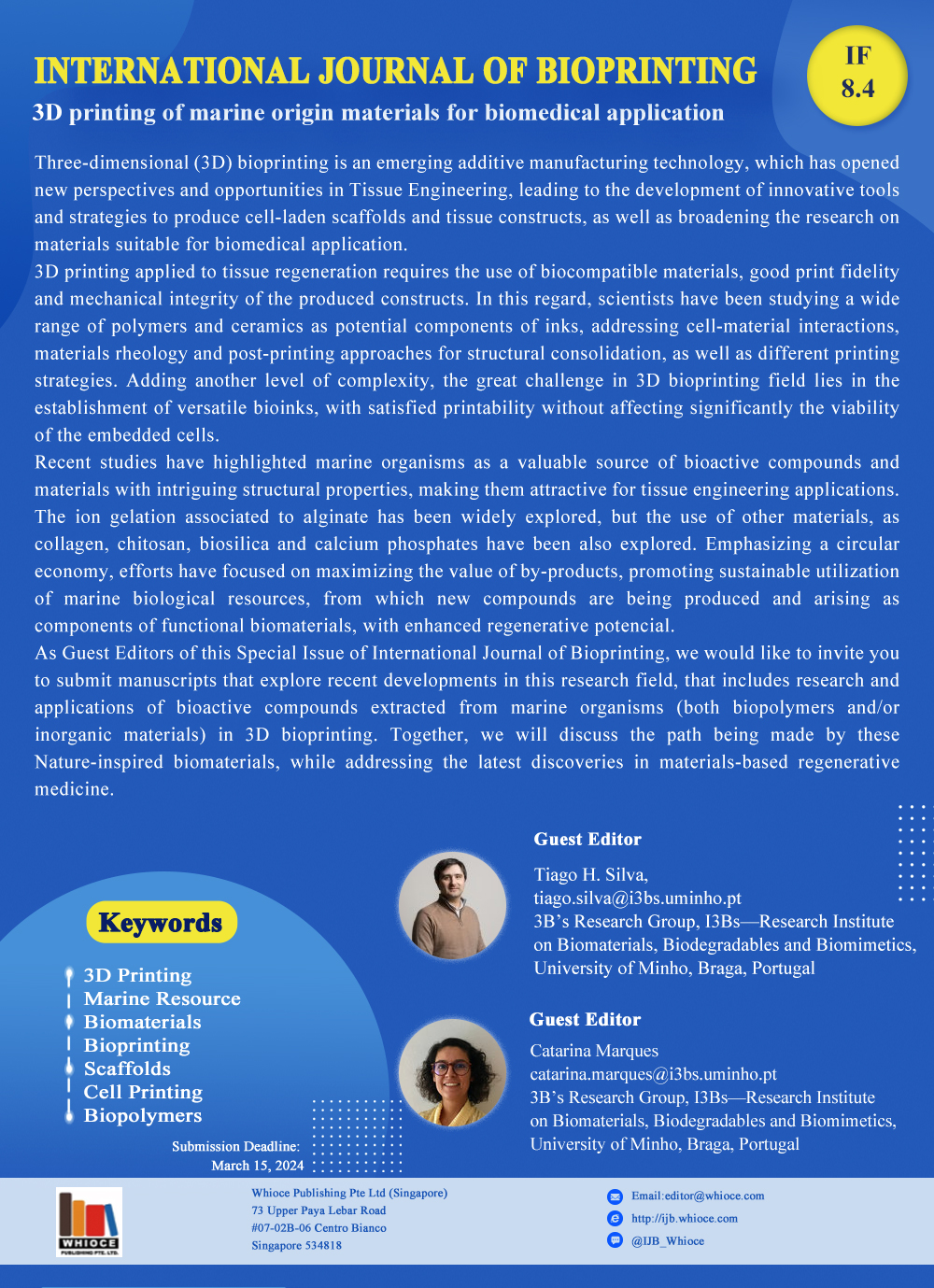
3B’s Research Group, I3Bs—Research Institute on Biomaterials, Biodegradables and Biomimetics, University of Minho, Braga, PortugalMarine biomaterials; Tissue engineering; Surface chemistry; Scaffolds; Collagen; Chitosan; Fucoidan; Marine biotechnology; Biomedical applications; Valorization of marine resources and by-products

3B’s Research Group, I3Bs—Research Institute on Biomaterials, Biodegradables and Biomimetics, University of Minho, Braga, PortugalBiomaterials; Bone tissue engineering; Regenerative medicine; Colloidal processing; Calcium phosphates; Additive manufacturing techniques; Marine biotechnology

Three-dimensional (3D) bioprinting is an emerging additive manufacturing technology, which has opened new perspectives and opportunities in Tissue Engineering, leading to the development of innovative tools and strategies to produce cell-laden scaffolds and tissue constructs, as well as broadening the research on materials suitable for biomedical application.
3D printing applied to tissue regeneration requires the use of biocompatible materials, good print fidelity and mechanical integrity of the produced constructs. In this regard, scientists have been studying a wide range of polymers and ceramics as potential components of inks, addressing cell-material interactions, materials rheology and post-printing approaches for structural consolidation, as well as different printing strategies. Adding another level of complexity, the great challenge in 3D bioprinting field lies in the establishment of versatile bioinks, with satisfied printability without affecting significantly the viability of the embedded cells.
Recent studies have highlighted marine organisms as a valuable source of bioactive compounds and materials with intriguing structural properties, making them attractive for tissue engineering applications. The ion gelation associated to alginate has been widely explored, but the use of other materials, as collagen, chitosan, biosilica and calcium phosphates have been also explored. Emphasizing a circular economy, efforts have focused on maximizing the value of by-products, promoting sustainable utilization of marine biological resources, from which new compounds are being produced and arising as components of functional biomaterials, with enhanced regenerative potencial.
As Guest Editors of this Special Issue of International Journal of Bioprinting, we would like to invite you to submit manuscripts that explore recent developments in this research field, that includes research and applications of bioactive compounds extracted from marine organisms (both biopolymers and/or inorganic materials) in 3D bioprinting. Together, we will discuss the path being made by these Nature-inspired biomaterials, while addressing the latest discoveries in materials-based regenerative medicine.
Photoacoustic imaging for three-dimensional bioprinted constructs

